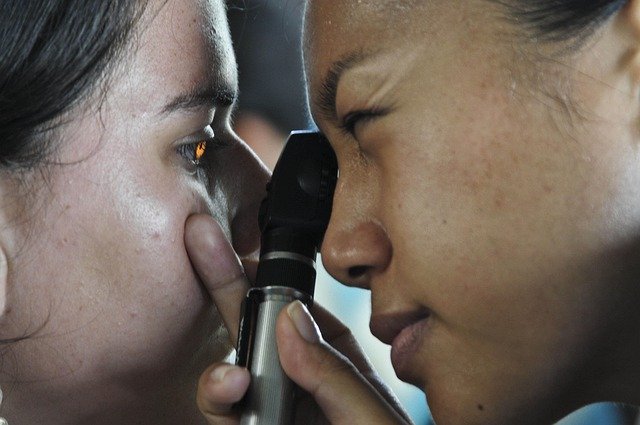Predictive Signs That Indicate the Need for Urgent Ophthalmic Imaging
Identifying when blurred vision or sudden visual changes require urgent imaging can prevent long-term harm. This article outlines common predictive signs, explains why timely ophthalmic imaging matters, and describes how diagnostics support clinical decisions for eye health.

Blurred vision can range from a transient annoyance to the first sign of a sight‑threatening condition. Rapid onset of visual disturbance, new visual field loss, flashes, or sudden changes in clarity often prompt clinicians to escalate from routine examination to urgent ophthalmic imaging. Imaging—including optical coherence tomography, fundus photography, and corneal topography—helps clarify the underlying problem and guide appropriate diagnostics and management without delay.
When does blurred vision require imaging?
Acute or progressive blurring that cannot be explained by simple refraction changes should raise concern. If corrective lenses or a recent refraction do not restore baseline clarity, imaging of the posterior segment and anterior structures helps differentiate refractive error from structural pathology. Symptoms warranting prompt imaging include sudden onset monocular blurring, persistent bilateral loss that progresses over days, or blurred vision accompanied by pain, significant headache, or neurological signs. Imaging helps determine whether the cause is optical, retinal, vascular, inflammatory, or neurological and directs next steps in care.
What optic or retinal symptoms suggest urgency?
Symptoms such as sudden central vision loss, new scotomas (blind spots), flashing lights, or a curtain‑like shadow across the visual field strongly suggest retinal or optic nerve involvement. These presentations may indicate retinal detachment, central retinal artery or vein occlusion, vitreous hemorrhage, or optic neuropathy. High‑resolution retina imaging, including OCT and widefield fundus photography, enables clinicians to visualize retinal layers, detect macular edema or detachments, and prioritize urgent interventions to preserve vision.
How do cornea and anterior eye signs affect urgency?
Corneal pathology can also produce marked blurred vision and glare. Rapidly worsening pain, redness, discharge, or a sudden decrease in acuity alongside blurred vision may signify infectious keratitis, corneal ulceration, or acute corneal edema. Corneal topography, anterior segment OCT, and slit‑lamp imaging provide objective information on corneal integrity, thickness, and surface irregularities. Timely anterior segment imaging supports diagnosis, helps monitor response to treatment, and reduces the risk of scarring that can compromise long‑term visual rehabilitation.
When should refraction and screening lead to imaging?
Routine optometry screening and refraction identify many common vision problems, but certain screening findings should prompt further imaging. Examples include a large unexplained inter‑eye acuity discrepancy, abnormal pupillary responses, sudden change after head trauma, or new diplopia combined with blurred vision. In these contexts, imaging complements refraction by revealing structural causes not correctable with lenses—such as intraocular inflammation, retinal pathology, or orbital lesions—and supports multidisciplinary referral to ophthalmology when needed.
What role do ophthalmology diagnostics and imaging play?
Ophthalmology leverages a suite of imaging modalities to translate symptoms into actionable diagnosis. Optical coherence tomography (OCT) maps retinal layers and macular pathology; fluorescein angiography visualizes retinal circulation; ocular ultrasound assesses posterior segment when media are opaque; and corneal imaging evaluates anterior surface metrics. These diagnostics reduce uncertainty and allow clinicians to stratify urgency, choose medical versus surgical management, and plan follow‑up frequency. Imaging findings directly influence prognosis and rehabilitation strategies.
How do imaging results influence rehabilitation and follow‑up?
After acute diagnosis and treatment, imaging remains central to monitoring recovery and guiding visual rehabilitation. For example, serial OCT can track resolution of macular edema, while corneal imaging documents surface healing and stability before fitting contact lenses or planning refractive procedures. Imaging also helps determine the need for vision rehabilitation services—such as low‑vision aids or occupational adaptations—by objectively documenting residual deficits. Coordination between optometry, ophthalmology, and rehabilitation specialists ensures imaging informs both medical care and functional outcomes.
This article is for informational purposes only and should not be considered medical advice. Please consult a qualified healthcare professional for personalized guidance and treatment.
Prompt recognition of predictive signs—sudden monocular loss, new scotomas, flashes, a curtain effect, severe pain with corneal signs, or unexplained deterioration after refraction—helps clinicians decide when urgent ophthalmic imaging is necessary. Imaging translates subjective symptoms into objective findings that guide timely diagnostics, targeted treatment, and appropriate follow‑up to protect vision and quality of life.






